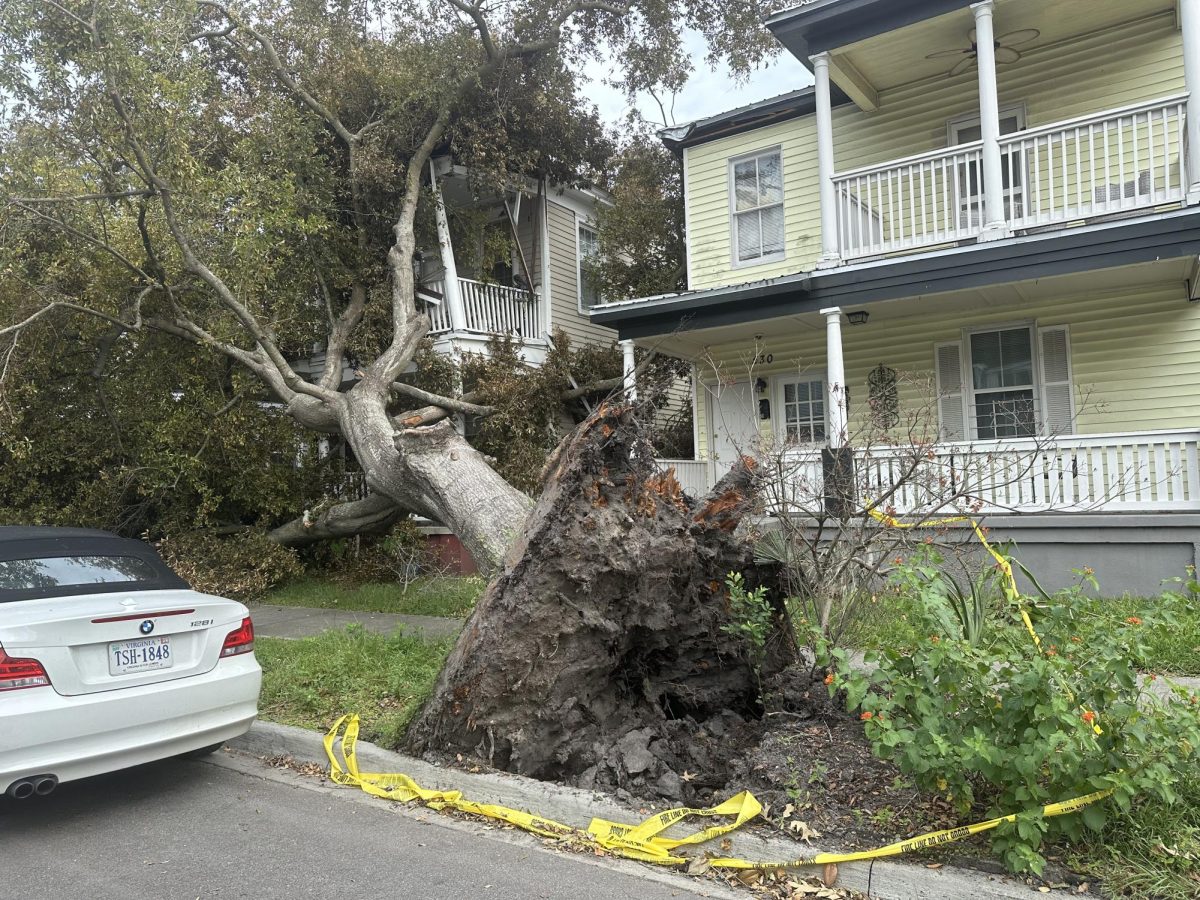
By Charles Norton, Staff Writer
If you attend a play at Jenkins Hall, either on the Mainstage or in the Black Box, chances are, you have seen a set designed by University of North Carolina School of the Arts alum and Assistant Professor at Armstrong State University, Megan Baptiste-Field.
In addition to teaching theater classes, Professor Baptiste-Field serves as Design and Production/Technical Director for the ASU theater department. This is the Francestown, CT resident’s sixth year at Armstrong–her fourth as a full time faculty member.
Professor Baptiste-Field has been involved in art and theater since first grade. Both of her parents were educators who exposed her to the arts, and took her to see plays in Boston, MA, such as “The Nutcracker,” and art museums. “My parents were very supportive and strong proponents of education,” Field said. “They supported my interests and career choices 100 percent.”
Field began acting in grade school, but those interests began to change when she was a junior in high school after meeting a guest Technical Designer. She started painting, lighting, and building sets, along with learning the art of stage management. The designer required the actors to contribute to productions by assisting with set construction. Field loved the technical aspects of theatre so much that she quit acting to concentrate on theater production.
Her first job after she graduated from Hollins University in Roanoke, VA, was working for the Tony award winning, Godspeed Opera House in East Haddam, CT. Four days later she met designer, Howard Jones. The high standards she learned from him eventually led her to grad school, where ironically, he was her Professor. “He was a demanding professional designer that expected perfection,” She said. After she received her M.F.A.,Field worked professionally in both film and theater, but teaching at a university has offered new challenges to her.
“Managing the educational integrity of students and the artistic integrity of our productions, and trying to follow the standard practices of the industry while navigating the challenges of fluctuating budgets, the size of the labor pool, and frankly, not enough hours in the day, are the biggest challenges,” She said.
Other challenges she has faced have been designing more shows in less time, and designing multiple shows simultaneously, have become common to her. Commitment to the productions and to the technical theater students have helped her become better as a designer. Walter Pigford, senior theater student and shop foreman for the theater considers her presence in the theater crucial. “Even when I am working in the shop, I am always learning. Megan (Baptiste-Field) is always patient and always teaching better ways of doing things,” he said.
Field would like to see more people get involved in theater either by working on, acting in, or simply attending a production. “Theater is an important way to learn how humans interact and understand each other, and it’s unique because it is dependent on the collaboration between the artists and the audience,” she said.
Many students on campus wonder how they can get involved with the performing arts. Many students want to be engaged with the process, but have no desire to act. According to Field, the best way to get involved is to take a theatre class for credit like Stagecraft.
There are many theater classes available for non-theater majors. Students get to learn about tools and safety, while experiencing different techniques for producing shows in the Black Box and on the Mainstage. “It is very interesting for students to see the process of working on a show and seeing the end result of their hard work,” Field said.
Another great way to get involved in theater is to attend auditions for shows, and fill out a form to help with non-acting roles like ushering, lighting, sound, scene painting, costumes, construction, and props. It is always busy backstage during productions.
Theater Professor Pam Sears has observed that if someone were to stand in the lobby at Jenkins Hall, it would seem quiet, almost as if there is no one in the building. “But walk through the lobby to anywhere backstage, and usually there are up to twenty people working behind the scenes–all being led and supervised by Professor Field,” Sears said. Sears admires how conscientious Field is in keeping the students, crews, and the audiences safe at all times while ensuring that a positive theater experience is had by all.
It is not all work and no play for Field. In her spare time she loves the outdoors–rock climbing, camping and hiking–anything outside activity to reduce the stress of working long hours indoors. She ran a half-marathon in last week’s Rock-n-Roll Marathon.
Field takes her inspiration from artists who take risks outside the box, and from people who have opinions they are not afraid to voice. People who have broken the mold from Mark Rothko to Brancusi, and performance artists/political activists like the Guerrilla Girls. She encourages everyone to experience a museum or theater.







